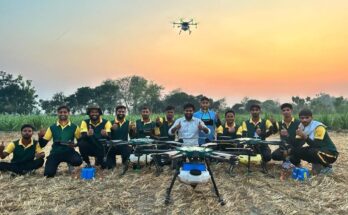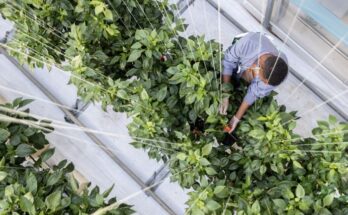Ministry of Agriculture and Farmers Welfare, has been pro-active in using the space technology in agricultural sector. The Ministry, since early 80s has been funding various projects, under which Indian Space Research Organisation (ISRO) has developed methodologies for crop production forecasting, Minister of State for Ministry of Agriculture & Farmers Welfare, Parshottam Rupala said in the Lok Sabha Tuesday.
The Department of Agriculture, Cooperation and Farmers Welfare has established a Centre, called Mahalanobis National Crop Forecast Centre, in 2012, for operationalisation of the space technology developed by ISRO for crop production forecasting. The Department has another centre called Soil and Land Use Survey of India, which uses satellite data for soil resources mapping. Currently, the Department is using space technology for its various programmes and areas, such as, Forecasting Agricultural Output using Space, Agro-meteorology and Land-based Observations (FASAL) project, Coordinated programame on Horticulture Assessment and Management using geoiNformatics (CHAMAN) project, National Agricultural Drought Assessment and Monitoring System (NADAMS), Rice-Fallow Area Mapping and intensification, geo-tagging of infrastructure and assets created under Rashtriya Krishi Vikas Yojana (RKVY) and crop insurance, Rupala informed the lower house of the Indian Parliament.
The space technology helps getting fast and accurate information about the crop situation in the country. It provides digital data, which is amenable to various analysis. Due to its synoptic view, it provides images of the whole country in a very short duration. Hence, this data can be used for various programmes, which need information on crop type, crop area estimates, crop condition, crop damages, crop growth among various other related things, the minister added.
Department of Agriculture, Cooperation and Farmers Welfare had launched KISAN [C(K)rop Insurance using Space technology And geoiNformatcs] project in October 2015. The project envisaged use of high-resolution remote sensing data for optimum crop cutting experiment planning and improving yield estimation. Under this project, pilot studies were conducted in four districts of four different states; Haryana, Karnataka, Maharashtra and Madhya Pradesh. The study provided many useful inputs for smart sampling, yield estimation, optimum number of Crop Cutting Experiments (CCEs) among others which were used to define standard operating procedures for use of satellite data in the revised guidelines of Pradhan Mantri Fasal Bima Yojna (PMFBY), Rupala further added.
The Department is carrying out a large number of pilot studies, through government and non-government agencies for use of space technology in optimising CCEs, a major requirement for PMFBY. The Department is also using satellite remote sensing data for monitoring agricultural situation of 29 double risk districts, the minister said.
Application of space technology in agriculture




